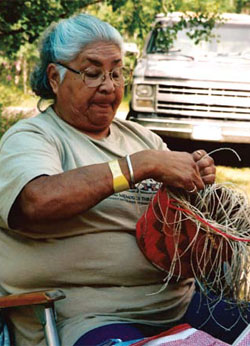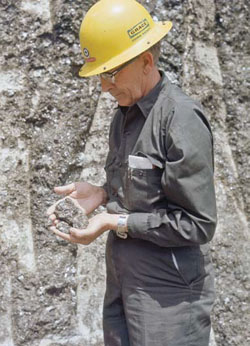Montana: Stories of the Land
Companion Website and Online Teacher's Guide
Chapter 22 - Living in a New Montana, 1970-2007
Chapter 1 - Montana: Where the Land Writes History
Chapter 2 - People of the Dog Days
Chapter 3 - From Dog Days to Horse Warriors
Chapter 4 - Newcomers Explore the Region
Chapter 5 - Beaver, Bison, and Black Robes
Chapter 6 - Montana's Gold and Silver Boom
Chapter 7 - Two Worlds Collide
Chapter 8 - Livestock and the Open Range
Chapter 9 - Railroads Link Montana to the Nation
Chapter 10 - Politics and the Copper Kings
Chapter 11 - The Early Reservation Years
Chapter 12 - Logging in the "High Lonesome"
Chapter 13 - Homesteading This Dry Land
Chapter 14 - Towns Have Lives, Too
Chapter 15 - Progressive Montana
Chapter 16 - Montana and World War I
Chapter 17 - Montanans on the Move
Chapter 18 - The Great Depression Transforms Montana
Chapter 19 - World War II in Montana
Chapter 20 - Building a New Montana
Chapter 21 - A People's Constitution
Chapter 22 - Living in a New Montana
Educator Resources
Takeaways
-
Inspired by reading specialist Tammy Elser, who was in turn inspired by SKC graduate Taylor Crawford, we've created a "Takeaway" bookmark for every chapter of Montana: Stories of the Land. Before starting a chapter, print and cut out these bookmarks and distribute them to your students. Ask them to use the Takeaway to summarize the GIST of what they learn from reading assigned sections of the chapter. Remind them that they don't have much room, so they'll need to think before they write down the most important idea they want to take away from the section. Learn a little more about the GIST strategy.
-
Even though we've created Takeaways for every chapter, we don't recommend you have your students complete a Takeaway for every section of every chapter they read. That would be exceedingly tedious. However, used appropriately, they can be a useful tool for encouraging reflection and teaching students how to summarize information.
Websites and Online Lesson Plans
-
Looking to introduce your students to the legislative process? Download the "Guide to the Montana Legislature," a booklet for anyone wanting basic information about the way the Montana Legislature works and how best to get involved in the legislative process. The guide is also available in booklet form from the Legislative Information Office leginfo@mt.gov, 406-444-2957.
-
"Mining Sacred Ground: Environment, Culture, and Economic Development on the Northern Cheyenne Reservation" is a learning activity designed to familiarize students with an important and contentious issue now facing Montana's native peoples: whether or not to develop their reservation's coal and coalbed methane resources. The goal of this activity is to challenge youngsters to better appreciate the complexities of promoting resource-based economic development when such action conflicts with traditional cultural values. By the end of the exercise, students should also understand that tribal members differ in their attitudes toward resource extraction. This dovetails nicely with Essential Understanding 1: there is "great diversity among individual American Indians."
-
Mountain West News and the Montana Free Press provide news and opinion in the mountain West and Montana.
-
The Working Group has created resources to accompany their video, Not in Our Town, about Billings residents' stand against racial and religious intolerance.
-
Paper Candles: How Courage and Goodness Triumphed in an American Town is a play based on the story of Billings, Montana, written for elementary, middle and high school students.
-
Butte’s Industrial Landscape is a PowerPoint and script created by Fred Quivik, Professor Emeritus of History, at Michigan Technological University. Originally presented as part of the NEH-funded workshop, "The Richest Hills: Mining in the Far West, 1860-1920," the PowerPoint examines industrial mining's social and environmental impacts, and can be adapted for classroom use, particularly in the upper grades.
-
Montana The Magazine of Western History created a discussion guide for "Remaking the Wide-Open Town: Butte at the End of the Twentieth Century," by Brian Shovers, an article published in the Autumn 1998 issue. The article's full text (but not the pictures) is posted online.
-
NOVA created the classroom activity "Where Growth Meets Growth," about the wildland-urban interface. The activity accompanies its film Fire Wars, which focuses on the 2000 fire.
-
The Indian Education Division of OPI has many model lesson plans relevant to this chapter including ones on the structure of tribal sovereignty, self-determination, and language preservation.
-
Find clips from the documentary "Keeping the Barn," which features Montana families sharing the stories of the historic barns on their properties, and the importance of barns today, along with support material for using these clips in your classroom at MontanaPBS Learning Media.
-
The Indian Land Tenure Foundation has excellent information on allotment and its consequences, including free lesson plans.
-
The Montana Arts Council offers resources for incorporating folklife in the classroom.
-
The Montana Climate Assessment website has short videos and other accessible material on how climate change is affecting Montana and what Montanans are doing to meet new challenges brought about by climate change.
Videos or DVDs
-
Class C: The Only Game in Town - 88 minutes
-
Not in Our Town: The Original Story - 27 minutes
-
Butte Reborn: The Mining City In The 21st Century - 59 minutes
-
Chapter Five, "Ethnic Migration," (20 minutes), Chapter Nine, "A Clean and Healthful Environment," (23 minutes), Chapter Eleven, "The Arts and Humanities in Montana," (18 minutes), and Chapter 10, "The Anaconda Copper Mining Company," (16 minutes) of Montana Mosaic: 20th Century People and Events. (Site includes links to both User Guides with discussion questions and videos.)
-
Why Save a Language, Regional Learning Project - 27 minutes
-
American Indian Homelands: Matters of Truth, Honor and Dignity - Immemorial, Indian Land Tenure Foundation - 78 minutes. DVDs are available for purchase for $5 each, plus shipping. To order, please email info@iltf.org or call 651-766-8999. You can find excerpts on YouTube.
-
Tribal Nations: The Story of Federal Indian Law - 60 minutes
-
Path to Eden, The Rural Landscape Institute - 26 minutes
-
Boom behind the Bakken – 56 minutes.
-
100 Years: One Woman's Fight for Justice - 70 minutes (Check your library. OPI donated a copy of this DVD to every public high school library in Montana. The film is also available through Netflix.)
Possible Field Trips: View the Map
-
Berkely Pit, Butte
-
Montana Historical Society, Helena
-
Western Heritage Center, Billings
-
World Museum of Mining, Butte
Chapter 22 Test and Answer Keys Page
The tests and answer keys are password protected.
You can contact us to receive the password:
- Martha Kohl - call (406) 444-4790 or email mkohl@mt.gov
- Melissa Hibbard - call (406) 444-4741 or email Melissa.Hibbard@mt.gov
Or, if you used the old system, the original username is now the new password. You will be asked for this case-sensitive password every time you open a new document.
Alignment to ELA Common Core Standards
Alignment to Content Standards and Essential Understandings Regarding Montana Indians (EU)





